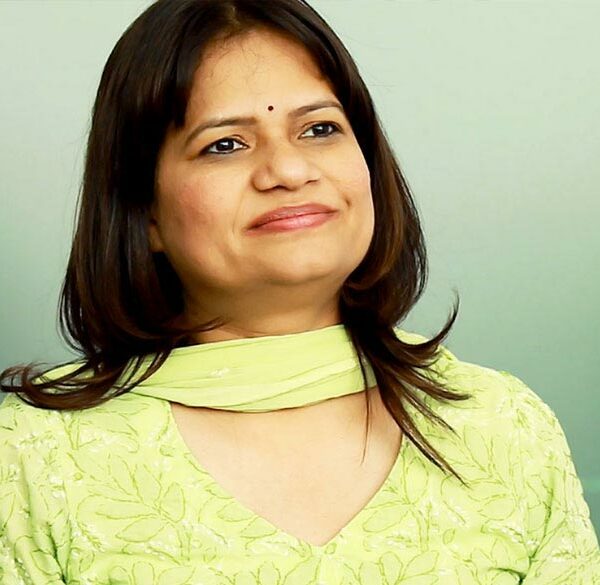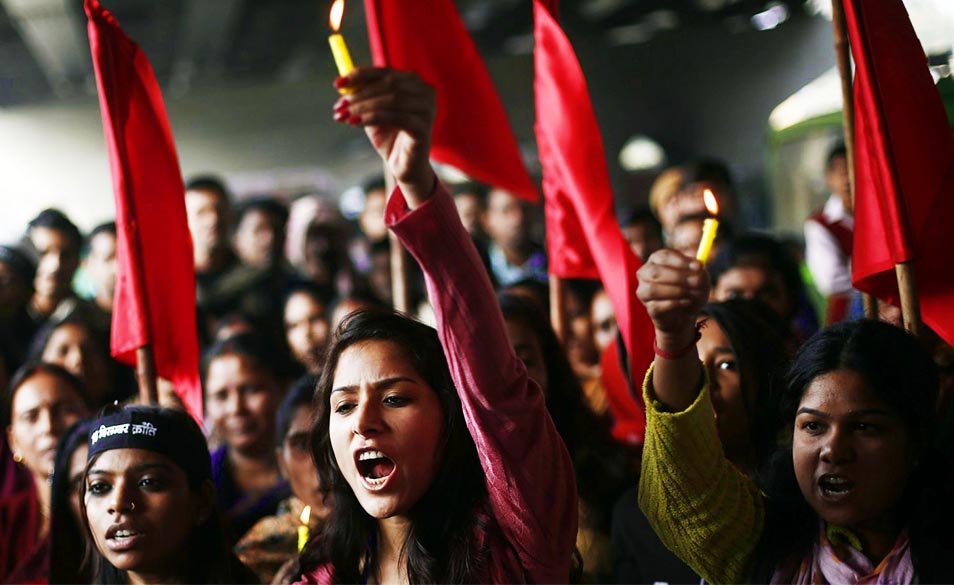I was in the third year of my college when our product was ready. We…
Read More →

I was in the third year of my college when our product was ready. We…
Read More →
Online Start-up space in India is ruled by IT professionals with elaborate degrees and it…
Read More →
“I am fortunate enough that I could turn something that I love into my career.”…
Read More →
Prerana Langa, CEO YES FOUNDATION, the social development arm of YES BANK (India’s Fifth Largest…
Read More →
In an exclusive interview with Feministaa, Ramona Arena talks about her journey, music, inspiration, marriage,…
Read More →
While Aarti Gill was studying in IIT Roorkee, she discussed her business idea with her…
Read More →
Banks are for people with money, not for people without. Microfinance refers to delivering essential…
Read More →
In almost three decades of designing and styling, ace designer Neeta Lulla has created mesmerizing…
Read More →
“If a woman wants to achieve her dreams, she can really make it happen.” Founder…
Read More →
Born and brought up in Surat, Ankita Jain was working at Radio Mirchi and Big…
Read More →
I was in the third year of my college when our product was ready. We…
Read More →
Online Start-up space in India is ruled by IT professionals with elaborate degrees and it…
Read More →
“I am fortunate enough that I could turn something that I love into my career.”…
Read More →
Prerana Langa, CEO YES FOUNDATION, the social development arm of YES BANK (India’s Fifth Largest…
Read More →
In an exclusive interview with Feministaa, Ramona Arena talks about her journey, music, inspiration, marriage,…
Read More →
While Aarti Gill was studying in IIT Roorkee, she discussed her business idea with her…
Read More →
Banks are for people with money, not for people without. Microfinance refers to delivering essential…
Read More →
In almost three decades of designing and styling, ace designer Neeta Lulla has created mesmerizing…
Read More →
“If a woman wants to achieve her dreams, she can really make it happen.” Founder…
Read More →
Born and brought up in Surat, Ankita Jain was working at Radio Mirchi and Big…
Read More →
I was in the third year of my college when our product was ready. We…
Read More →
Online Start-up space in India is ruled by IT professionals with elaborate degrees and it…
Read More →
“I am fortunate enough that I could turn something that I love into my career.”…
Read More →
Prerana Langa, CEO YES FOUNDATION, the social development arm of YES BANK (India’s Fifth Largest…
Read More →
In an exclusive interview with Feministaa, Ramona Arena talks about her journey, music, inspiration, marriage,…
Read More →
On 18th February, when 15,000 students assembled at Jantar Mantar to protest the arrest of JNUSU President Kanhaiya Kumar, a majority of the crowd was made by women, shouting at the top of their voices, negative the trampling over Right of Dissent in our current democracy. The role of women in student protests has been historical, a proud phenomenon because women add a new dimension of identity into the entire discourse and it also reveals that women of today are much more empowered and emancipated to raise slogans, be it for LGBT rights, gender issues or verdict of the rape cases.
Today, women are not ready to be silenced. They have their own voice and pride in it. They know they can demand, question and dissent. They also know that when they go out on marches along with thousands of male comrades, they are creating their own identity as a ‘fighter’ which is beyond the dichotomy of gender and its multiplicity. Today, the women of India are not afraid of the regime, they know that unity lies in strength and they are not going to be reduced in their identity in their quest for justice.
Shehla Rashid, the JNUSU Vice-President who has been a major force behind the student movement states openly ‘BJP leaders say that JNU women are prostitutes and use 3,000 condoms a day.
As comrade Kavita Krishnan said, we, JNU women, don’t consider any of these as insulting. We respect sex workers. The only insult word for us would be if someone calls us a “Sanghi”. However, I’d like to know the opinion of girls of ABVP JNU unit on this, especially, Ms. Mamta Tripathi. Not that there are many girls in ABVP, but I’d like to know their response.”
The cheap tactics of downgrading women, especially during the times of a revolution by the dominant regime in power is not a nascent phenomenon.
Questioning women, narrowing down their identity and often, trampling over their rights, is done shamelessly to reveal power politics. To this, Nivedita Menon, a feminist professor in JNU rightly stated that ‘one of the highest achievements of this student uprising has been the solidarity that it has gained.’ This solidarity cannot be expressed in mere words, because it has created history, a moment where thousands of women marched on the streets, voicing their claims, just as their male counterparts.
Kavita Krishnan, a prominent activist stated recently “Kiran Bedi suggested that it was tantamount to treason to refuse to call the Government, ‘my Government’. That was amusing. You know, in all my 43 years, I never remember having thought of a Government as ‘my’ Government’, one I can be proud of. I have always felt the Government was answerable and accountable to me, as a citizen. The onus of owning and defending the Government has been that of the ruling party. But she thinks it’s shocking that I should say ‘BJP Govt’ and not ‘My Govt.’ Hmmm… Will someone check if during the anti-corruption stir, Ms Bedi referred deferentially and proudly to the UPA Government as ‘My Govt’?
One then remembers the fiery lines of Ghalib:
“Ragon mein daudte firne ke hum naheen qaayal
jab aankh hee se na tapka to fir lahoo kya hai ?”
The blood flowing in our veins indicates that we exist, but does not mean that we are alive. Being alive means being aware of others’ pain. The desire to alleviate this pain should be intense enough to make one shed tears of blood.
But the history of women protesting in India for their rights is not new. Partha Chatterjee states that ‘it can be said that the evolution of the Indian women’s movement in the nineteenth century grew out of a cultural and nationalistic response to the British colonialists condemning of the treatment of women as barbaric and directly connected to Indian religious practices.’
It was around the 1970’s that the contemporary women’s movement began to be more radical and active, especially against the Indian state who for a time declared a state of emergency which led to the repression of all political and progressive groups, not just women’s. This repression led to a fight back by women’s organisations which greatly increased their scope and power. Today issues are fought over a large spectrum of issues including; union rights, abusive partners, the rights of ‘dalit’ women (the lowest caste in the Hindu religion), worker’s rights, sexual assault and much more. It is not just left-wing and progressive causes that are fought over by women, but right-wing issues too.
Protest by women in India against oppressive conditions comes in many forms. Today the women’s movement ‘exists in a highly decentralized form with hundreds of organizations in both urban and rural areas throughout the country’. This description furthers our claim the wide breadth that movement encompasses. How do we define what is part of the Indian women’s movement? As Patricia Jeffrey points out, female resistance to oppression can be found in many places and in many forms ; the excessive salting of meals, the singing of songs to remember injustices and comfort others, derision of husbands to friends and family behind his back, etc. These protests may seem trivial but they show the Indian women to be far from the compliant, ignorant person that she is often painted as in the west.
As Daniel Moase states ‘We can conclude then that whilst the Women’s movement in India is an energetic and modern movement, influencing over social movements both nationally and internationally, there are still many problems to confront. Particularly the inversion of feminist values by right-wing groups and the problem of defining what exactly women’s rights should constitute: The narrowing of feminist values. The Indian women’s movement is diverse and that women in India today are involved in redefining their own gender roles. Indian women today are far from the ignorant, oppressed stereotype perceived in the west. They in fact are active in both an individual and collective approach to organisation, and are centrally engaged in transforming their own lives.’
© Feministaa 2024 Media Pvt. Ltd. All rights reserved


